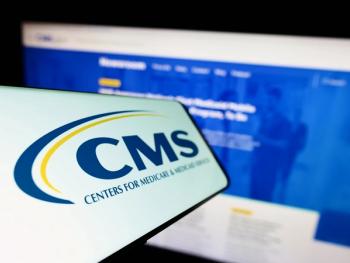
Breakthrough Gene Therapy Saves Infant With Rare Metabolic Disease
A personalized gene editing therapy was successfully used to treat an infant with CPS1 deficiency, a disease that causes ammonia buildup in the blood. The technology used creates an opportunity for the development of personalized treatments for other rare diseases.
An infant born with a lethal metabolic disorder was cured with a groundbreaking approach that involved a personalized gene-editing therapy developed and administered in less than a year.
The medical breakthrough was described in a new
“This is the first time that a patient has received a personalized gene-editing drug,” said Ahrens-Nicklas, who is the director of the
The therapy was created specifically for the baby, who was diagnosed with severe carbamoyl-phosphate synthetase 1 (CPS1) deficiency. This is an ultrarare disorder that disrupts the body’s ability to process nitrogen, leading to dangerous ammonia buildup in the blood. Without treatment, most affected children die or require ventilator support by age 2.
The treatment developed by researchers at Penn used a CRISPR-based technology, which chemically cuts and modifies a patient’s genetic code. The first CRISPR-based therapy, Casgevy (exagamglogene autotemcel), was approved in December 2023 to treat patients with sickle cell disease and in January 2024 to treat patients with beta-thalassemia. Casgevy was created using a CRISPR technology that directs the Cas9 enzyme to a specific location on DNA.
Two new types of CRISPR-based technology — base editing and prime editing — can rewrite individual DNA bases in the genome without making breaks in the DNA. The treatment developed for the infant at CHOP used a base-editing technology that was delivered to liver cells through lipid nanoparticles.
The infant received the first dose of the treatment at approximately 7 months of age, followed by a second dose a month later. Before treatment, the child required a severely protein-restricted diet and high doses of nitrogen-scavenger medication to prevent ammonia buildup.
Within seven weeks of the first treatment, the medical team observed notable improvements. The patient was able to increase dietary protein intake and reduce by half his nitrogen-scavenger medication dose. Even when challenged by viral illnesses — which typically trigger dangerous metabolic crises in children with similar disorders — the patient maintained stable ammonia levels without developing life-threatening complications.
Unlike most other gene therapies that use a virus to deliver a therapeutic payload and can only be given once due to immune responses, lipid nanoparticle therapies can potentially allow for multiple doses. This approach means the patient may be able to receive additional administrations of the treatment in the future if the effects wane.
“We opted to start with a very low initial dose of [the therapy] to evaluate safety, which was followed by a moderately higher second dose,” the authors wrote in the study.
The study’s authors anticipate that similar approaches could be developed for hundreds of other metabolic disorders affecting the liver. While this treatment was developed under emergency conditions, they believe “rapid deployment of patient-specific gene-editing therapies will become routine for many genetic diseases,” the authors wrote.
Longer follow-up is needed to assess the therapy’s long-term safety and efficacy. The patient continues to be monitored, with his neurological status remaining stable and weight increasing from the 9th to the 26th percentile during the follow-up period.
“We hope that other academic investigators will replicate this method for many rare diseases and give many patients a fair shot at living a healthy life,” Musunuru said in the CHOP blog post. “The promise of gene therapy that we’ve heard about for decades is coming to fruition, and it’s going to utterly transform the way we approach medicine.”
Newsletter
Get the latest industry news, event updates, and more from Managed healthcare Executive.






















































